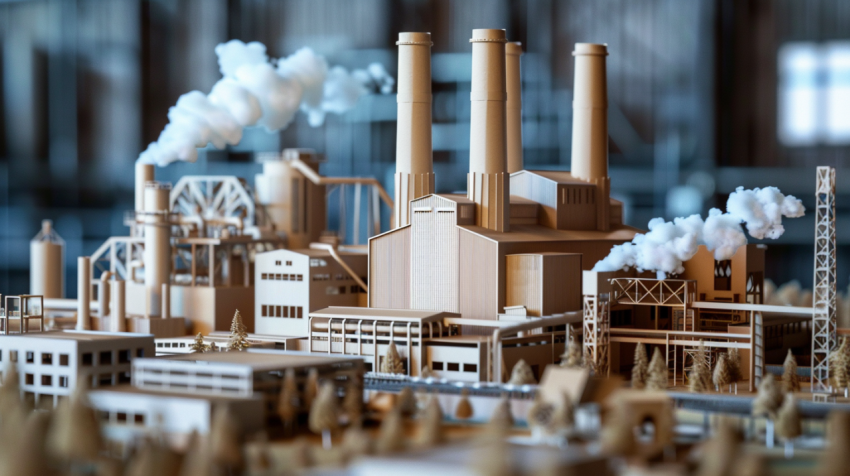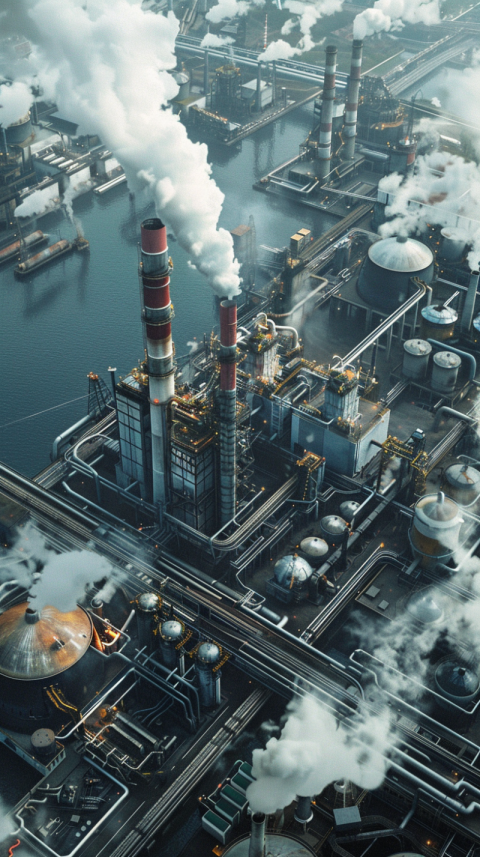











A Hub of Production and Industrial Transformation - The Engine of Industry
A factory, also known as a manufacturing plant or a production plant, is an industrial site, usually consisting of buildings and machinery, where workers manufacture goods or operate machines processing one product into another. Factories have been instrumental in driving industrial growth, mass production, and technological advancements. They represent a significant shift from manual labor to mechanized production, transforming economies and societies worldwide.
1. The Evolution of the Factory: From Workshops to Mass Production
The concept of a centralized production facility has evolved over centuries:
- Early Workshops: Before the Industrial Revolution, manufacturing often took place in small workshops or homes, where artisans and craftspeople produced goods using hand tools.
- The Putting-Out System: Also known as the domestic system, merchants would provide raw materials to workers who would process them in their homes.
- The First Factories: The Industrial Revolution in the 18th and 19th centuries saw the rise of factories, initially in the textile industry. These early factories used water and steam power to drive machinery.
- The Factory System: The concentration of workers and machines in one location, with a division of labor and standardized processes, became known as the factory system.
- Mass Production: The 20th century witnessed the development of mass production techniques, pioneered by figures like Henry Ford, enabling the efficient and large-scale manufacturing of goods.
- Automation and Robotics: The late 20th and early 21st centuries have seen increasing automation in factories, with robots and computer-controlled machines taking over many tasks previously performed by humans.
2. Types of Factories: Diverse Industries and Products
Factories can be classified based on the type of products they manufacture or the industry they serve:
- Textile Mills: Produce fabrics, yarns, and other textile products.
- Automobile Plants: Manufacture cars, trucks, and other vehicles.
- Steel Mills: Produce steel from iron ore and other raw materials.
- Food Processing Plants: Process and package food products.
- Electronics Factories: Manufacture electronic components, devices, and consumer electronics.
- Chemical Plants: Produce chemicals, plastics, and other chemical products.
- Pharmaceutical Factories: Manufacture medicines and other pharmaceutical products.
- Assembly Plants: Assemble finished products from components made elsewhere.
3. Factory Operations: Processes and Workflows
Factories employ various processes and workflows to transform raw materials into finished goods:
- Production Lines: A sequence of workstations where a product is progressively assembled or processed as it moves along a conveyor belt or other transport system.
- Batch Production: Producing goods in batches or lots, rather than continuously.
- Continuous Flow Production: A production system where materials flow continuously through the manufacturing process, often used for high-volume, standardized products.
- Lean Manufacturing: A production philosophy that emphasizes the elimination of waste (muda) in all aspects of the manufacturing process.
- Just-In-Time (JIT) Manufacturing: A system where materials and components are delivered to the factory only when they are needed for production, reducing inventory costs.
- Quality Control: Processes and procedures to ensure that products meet specified quality standards.
4. Factory Layout: Designing for Efficiency and Safety
The layout of a factory is crucial for optimizing workflow, maximizing efficiency, and ensuring worker safety:
- Process Layout: Machines and equipment are grouped together by the type of process they perform (e.g., all lathes in one area, all milling machines in another).
- Product Layout: Machines and equipment are arranged in a sequence that follows the steps required to manufacture a specific product (e.g., an assembly line).
- Fixed-Position Layout: The product remains in one location, and workers, materials, and equipment are brought to it (e.g., shipbuilding).
- Cellular Layout: Machines and workstations are grouped into cells, each dedicated to producing a family of similar parts or products.
5. Factory Workers: The Human Element in Production
Factory workers play a vital role in the manufacturing process:
- Machine Operators: Operate and monitor machines used in production.
- Assembly Line Workers: Perform repetitive tasks on an assembly line.
- Material Handlers: Move raw materials, work-in-progress, and finished goods within the factory.
- Quality Control Inspectors: Inspect products to ensure they meet quality standards.
- Maintenance Workers: Maintain and repair machines and equipment.
- Supervisors and Managers: Oversee factory operations and manage workers.
6. The Impact of Factories on Society: Economic Growth and Social Change
Factories have had a profound impact on society:
- Economic Development: Factories have been major drivers of economic growth, creating jobs and generating wealth.
- Urbanization: The rise of factories led to the growth of cities as people migrated from rural areas to find work.
- Mass Consumption: Factories made goods more affordable and accessible, leading to mass consumption.
- Labor Movements: The concentration of workers in factories led to the formation of labor unions and the fight for better working conditions and wages.
- Social Change: Factories have transformed social structures, family life, and the nature of work itself.
7. Automation and the Future of Factories: The Rise of Smart Factories
Automation, robotics, and digital technologies are transforming factories:
- Industry 4.0: The fourth industrial revolution, characterized by the integration of cyber-physical systems, the Internet of Things (IoT), cloud computing, and artificial intelligence (AI) into manufacturing.
- Smart Factories: Factories that use advanced technologies to optimize production, improve efficiency, and enhance flexibility.
- Industrial Robots: Robots are increasingly used in factories for tasks such as assembly, welding, painting, and material handling.
- Cobots (Collaborative Robots): Robots designed to work alongside humans in a shared workspace.
- Predictive Maintenance: Using data analytics and machine learning to predict when machines will need maintenance, reducing downtime.
- Digital Twins: Virtual replicas of physical assets, such as machines or production lines, that can be used for simulation, monitoring, and optimization.
8. Environmental Concerns and Sustainability in Manufacturing
Factories can have significant environmental impacts:
- Pollution: Air and water pollution from industrial processes.
- Resource Consumption: Factories consume large amounts of energy and raw materials.
- Waste Generation: Manufacturing processes generate waste, including hazardous waste.
- Green Manufacturing: A growing movement towards more sustainable and environmentally friendly manufacturing practices. This includes reducing waste, conserving energy and water, using renewable energy sources, and designing products for recyclability.
9. The Future of Factories
- Factories will likely become increasingly automated, data-driven, and interconnected.
- The use of AI, robotics, and the Internet of Things (IoT) will continue to transform manufacturing processes.
- Sustainability and environmental concerns will play an increasingly important role in factory design and operation.
- Factories may become more decentralized, with smaller, more flexible production facilities located closer to consumers.
- 3D printing may allow for more customized products to be made in factories or even at home.
Conclusion:
Factories are essential components of the modern economy, producing the goods we use every day and driving technological innovation. From the early industrial mills to today's highly automated smart factories, they have undergone a remarkable transformation, reflecting advancements in technology, changes in society, and evolving economic forces. As we move forward, factories will undoubtedly continue to evolve, embracing new technologies and adapting to the challenges of a rapidly changing world. The future of manufacturing will likely be shaped by factors such as sustainability, automation, and the increasing integration of digital technologies, ensuring that factories remain central to our industrial landscape.
Factory, factories, manufacturing plant, production plant, factory system, history of factories, industrial revolution, mass production, assembly line, types of factories, factory operations, factory layout, factory workers, factory jobs, factory automation, industrial robots, robotics, smart factory, Industry 4.0, lean manufacturing, just-in-time manufacturing, quality control, supply chain management, manufacturing processes, textile mill, automobile plant, steel mill, food processing plant, electronics factory, chemical plant, pharmaceutical factory, factory safety, environmental impact of factories, green manufacturing, sustainable manufacturing, factory pollution, factory waste, future of factories, factory tour.

